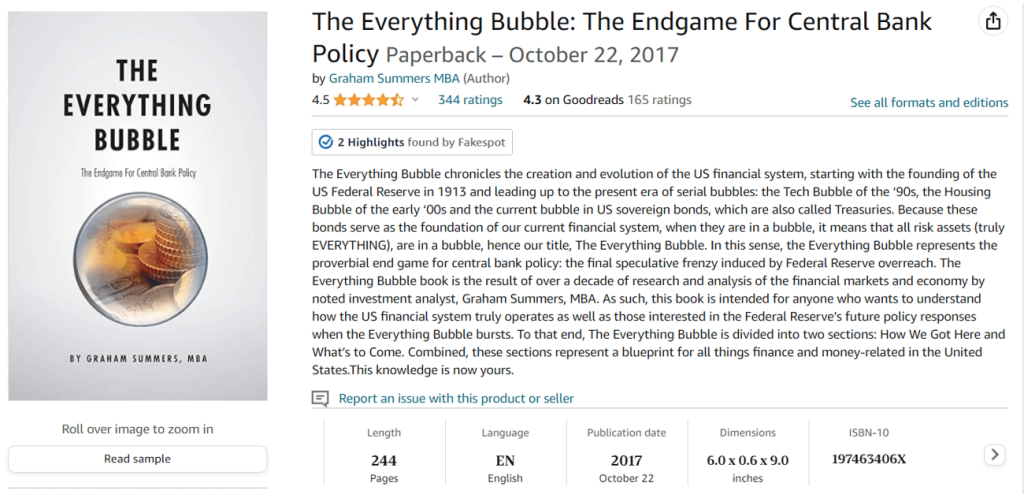
A Hospital Room Epiphany About Financial Markets
Dear Traders,
Yesterday, I found myself in a Vancouver emergency room due to complications from my post-surgery recovery. While I patiently waited to see a doctor during a long 6-hour wait, I had the opportunity to finish an intriguing book titled “The Everything Bubble: The Endgame for Central Bank Policy” by Graham Summers. Despite the extended wait time, the book was quite interesting and full of insights.
The book delves into the creation of the Federal Reserve, the US central banking system, in 1913 and the significant events that shaped the financial landscape. It takes us through the abandonment of the gold standard first by President Roosevelt in 1933 and the later decision by President Nixon in 1971. The narrative then unfolds to include the dot-com bubble and how Alan Greenspan, then Chairman of the Federal Reserve, navigated the aftermath of the dot-com crash by inflating another bubble, this time in real estate. Interestingly, Greenspan resigned in March 2007, right before the market peak, and the financial system collapsed in 2008.
The story continues with Ben Bernanke, who succeeded Greenspan as Chairman of the Federal Reserve, and his efforts to lift the US out of the Great Recession, primarily by creating another bubble, this time in US Treasuries and government sovereign bonds. The book was fascinating, outlining how a decade of Zero Interest Rate Policy (ZIRP) led to the creation of the ultimate financial asset bubble: US Treasuries.
Graham Summers published this book in 2017 and warned that if US Treasuries, the pinnacle of financial assets, were to collapse, it would have catastrophic consequences. The book aptly earned the title “Everything Bubble.” The author even suggested that if the bubble burst, the US government might need to implement extreme measures such as cash ban policies and negative interest rates to prop up Treasuries’ prices.
While these scenarios may sound dramatic, the author urged us to take them seriously by citing examples from Japan’s negative interest rate policies, Argentina’s debt crisis in 2001, and the Greek and Eurozone crises of 2017.
However, it’s worth noting that the book was published in 2017, and I doubt the author would write the same book today. In 2022, the bond market experienced a collapse, with Treasuries plummeting by over 60%. Instead of negative interest rates, rates surged to 5.5%. Surprisingly, the US economy did not collapse, and by December 2023, we’re witnessing new all-time highs in the Nasdaq index, with the S&P 500 potentially following suit.
What led to this unexpected turn of events?
Perhaps it’s best summed up by JPow’s statement in July 2022 regarding the post-pandemic recovery:
“We now understand better how little we understand about inflation.”
It might not be just inflation that we don’t fully comprehend, but rather the resilience of the US economy as a whole. The unexpected collapse of US Treasuries and a sharp 5% increase in interest rates did not derail the economy. Consumer spending remained strong, and companies adapted to safeguard their earnings and profitability.
Personally, I am grateful for the amazing period I experienced. It made me a better investor and trader. I faced two bear markets in a short period of time, and despite some significant losses, it has forged me into a stronger investor and a more resilient trader.
On the trading front today, Amazon provided excellent trading opportunities, surging over 5% with a daily breakout. I had some remarkable trades on it, you can find my recap on our YouTube channel.
As we approach the holiday season, our community remains strong and forward-looking. Tonight, we have an onboarding session for all new members, and tomorrow, I’ll be discussing VWAP trading in our Tuesday strategy webinar.
I look forward to seeing many of you in the chatroom tomorrow.
To your continued success,
Andrew







